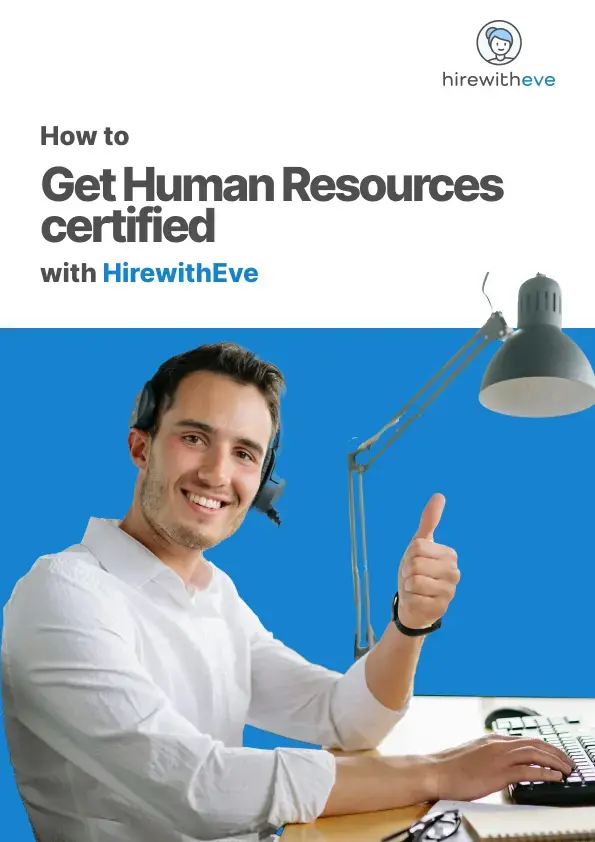How to Handle Employee Grievance: A Guide for Talent Acquisition Specialists and HR Managers
How to Handle Employee Grievance: A Guide for Talent Acquisition Specialists and HR Managers

Employee grievances are inevitable in any organization, regardless of its size or industry. Whether it’s an issue related to workplace conditions, relationships with supervisors, or misunderstandings regarding company policies, how these grievances are handled plays a pivotal role in employee retention, workplace morale, and the overall culture of the organization. For HR managers and talent acquisition specialists, knowing how to handle employee grievance effectively is a must to maintain a positive and productive work environment.
In this blog, we will dive into how to handle employee grievance comprehensively, offering HR managers practical steps and strategies for addressing these issues in a timely, transparent, and fair manner.
Table of contents
Introduction
Every organization, regardless of its culture or policies, will face employee grievances at some point. The way these grievances are managed can be the difference between a thriving work environment and a toxic one. HR managers and talent acquisition specialists must develop robust strategies on how to handle employee grievance to maintain trust within their teams and foster open communication. With a clear, transparent grievance handling process, organizations can ensure that employees feel heard and valued, ultimately reducing turnover and improving engagement.
Why Employee Grievances Matter
Before understanding how to handle employee grievance, it’s essential to recognize why addressing grievances is crucial. Unresolved grievances can lead to dissatisfaction, reduced productivity, and even resignation or legal challenges. For talent acquisition specialists, this can translate into higher recruitment costs and difficulties in attracting top talent, as a company's reputation becomes tarnished due to poor handling of internal issues.
A survey conducted by the Society for Human Resource Management (SHRM) found that employees are more likely to stay in organizations where their concerns are addressed promptly and effectively. This underscores the importance of HR professionals mastering how to handle employee grievance to ensure employees feel respected and heard.
Common Types of Employee Grievances
Understanding the common grievances employees might raise is the first step in knowing how to handle employee grievance effectively. Here are the typical categories:
Workplace Conditions: Issues related to physical working conditions, such as lack of resources, poor ergonomics, or safety hazards.
Pay and Benefits: Complaints related to discrepancies in salary, unfair pay practices, or benefits not being provided as promised.
Workload and Job Role Clarity: Some employees may feel overburdened by tasks outside their job description or unclear expectations.
Relationships with Supervisors and Colleagues: Conflict between employees or issues with managers can significantly impact morale and productivity.
Discrimination and Harassment: Employees may raise concerns about unfair treatment based on race, gender, sexual orientation, or other personal characteristics.
Company Policy Misunderstandings: Employees may have grievances when they misunderstand or disagree with company policies or when policies are enforced inconsistently.
Being able to identify the nature of the grievance allows HR managers to tailor their approach to resolving the issue and preventing its recurrence.
Step-by-Step Process on How to Handle Employee Grievance
The key to mastering how to handle employee grievance lies in having a structured, well-communicated process that is fair, transparent, and efficient. Here’s a step-by-step guide HR managers can follow:
Step 1: Establish an Open-Door Policy
Encourage employees to speak up about their concerns by maintaining an open-door policy. When employees know their grievances will be heard without fear of retaliation, they are more likely to approach HR early before issues escalate.
Step 2: Acknowledge and Document the Grievance
When an employee comes forward with a grievance, the first step in how to handle employee grievance is to acknowledge it promptly. Document the details of the complaint to ensure that all aspects are captured accurately. This record will be critical if the issue escalates or if there is a need for further investigation.1
Step 3: Investigate the Grievance
Once the grievance is documented, HR should conduct a thorough investigation. Gather all relevant information from the parties involved and any witnesses. This helps in understanding the full scope of the issue and ensures that the resolution process is informed by all perspectives.
Step 4: Meet with the Employee
After gathering information, arrange a meeting with the employee who raised the grievance. Ensure that the environment is comfortable and neutral, allowing the employee to express their concerns freely. Effective listening is critical in this step of how to handle employee grievance.
Step 5: Provide a Fair Resolution
After reviewing all the information, HR should offer a solution that addresses the grievance fairly. The resolution should be communicated clearly to the employee, explaining how the issue will be resolved or what actions will be taken.
Step 6: Follow Up
One of the most critical steps in how to handle employee grievance is following up with the employee. Check in after some time to ensure that they are satisfied with the resolution and that no further issues have arisen. This step shows the employee that the organization values their concerns and is committed to their well-being.
Preventive Measures to Reduce Employee Grievances
Preventing grievances before they arise is a proactive way to create a positive work culture. Here are some preventive measures HR managers can take: Clear Communication Effective communication is a cornerstone of how to handle employee grievance. Ensure that company policies are well communicated, understood, and accessible to all employees. This can prevent misunderstandings and reduce the chances of grievances based on unclear expectations. Fair and Transparent Policies Grievances often stem from perceived inconsistencies in policy enforcement. HR managers should regularly review and update policies to ensure they are applied consistently and fairly across the board. Training for Managers Supervisors and managers play a key role in how employees perceive the workplace. Offering management training on conflict resolution, communication, and leadership can reduce the number of grievances related to managerial behavior. Employee Feedback Mechanisms Establish regular feedback loops, such as employee surveys or suggestion boxes, to give employees a chance to voice concerns before they turn into formal grievances. This will also show employees that the company values their opinions.
Conclusion
Knowing how to handle employee grievance is essential for HR managers and talent acquisition specialists who want to create a productive, harmonious work environment. By addressing grievances swiftly and effectively, organizations can build trust with their employees, improve retention, and maintain a positive reputation. Incorporating solutions like those offered by platforms like HirewithEve can further streamline the grievance handling process. HirewithEve provides tools for HR managers to track employee complaints, communicate resolutions effectively, and maintain transparency throughout the process. By leveraging such features, HR managers can efficiently manage grievances, ensuring that issues are addressed promptly and thoroughly, fostering a culture of openness and trust.
Target Your Talent
Unlock tailored solutions for your recruitment and hiring needs with Eve Platform's extensive case study library.
Subscribe now to enhance your HR expertise and excel in your role.
Free Resources

Transforming Hiring: 7 Key Recruiting Metrics
Enhancing recruitment processes with data-driven insights for better hiring outcomes.

Reducing Hiring Bias with Hirewitheve.
Utilizing Hirewitheve to combat bias and streamline recruitment processes effectively.

Hiring Detail-Oriented Candidates
HirewithEve enhances hiring by accurately assessing candidate's attention to detail-oriented.
